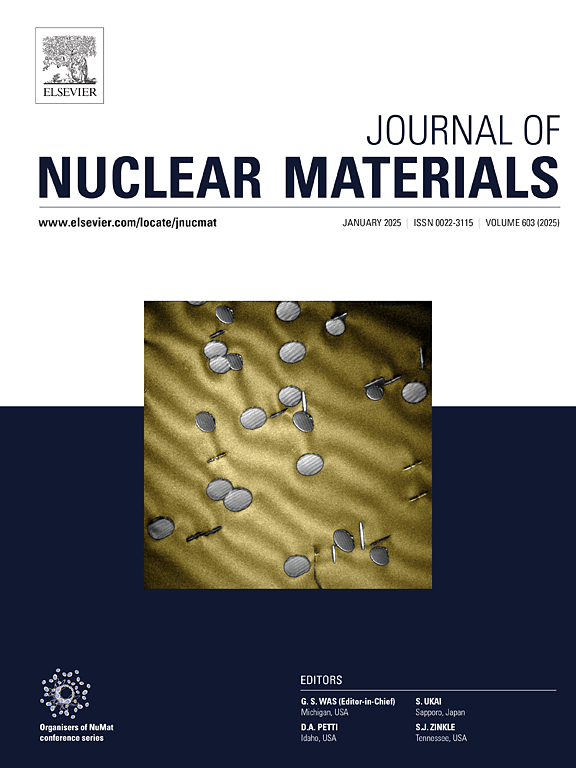Statistical fracture behavior of doped UO2 using a ball-on-ring equibiaxial flexure test method
IF 2.8
2区 工程技术
Q3 MATERIALS SCIENCE, MULTIDISCIPLINARY
引用次数: 0
Abstract
Metal oxide dopants, such as titanium and chromium oxides, have garnered considerable attention for their potential to increase grain size (≥ 30 µm) in UO2 fuel, purportedly enhancing fission gas retention during reactor operation. Fuel performance is significantly impacted by fuel fracture behavior, so it is important to understand the effects of enhanced grain size and dopant content on UO2 fuel fracture. UO2 pellets were doped with 0.1 wt% TiO2 and 0.3 wt% Cr2O3 to alter density and grain size. Inductively coupled plasma mass spectroscopy measured dopant levels pre- and post-sintering. X-ray diffraction revealed lattice changes and microstrain via Rietveld refinement. Field emission scanning electron microscopy determined grain sizes of approximately 30 µm for TiO2 doping and 7 µm for Cr2O3 doping. Transverse rupture strength tests were performed on over 30 samples per dataset to obtain characteristic strength and Weibull modulus. Results indicate no statistical difference in fracture strength between 0.1 wt% TiO2 doped UO2 and undoped UO2, while 0.3 wt% Cr2O3 doped UO2 exhibited a 20% decrease in fracture strength. Doped UO2 samples also showed reduced Weibull modulus compared to undoped UO2, suggesting increased scatter in fracture strength. This study's findings suggest that titanium and chromium oxide doping in UO2, regardless of grain size, induce residual stresses, decreasing fracture strength and increasing variability in fracture behavior.
求助全文
约1分钟内获得全文
求助全文
来源期刊

Journal of Nuclear Materials
工程技术-材料科学:综合
CiteScore
5.70
自引率
25.80%
发文量
601
审稿时长
63 days
期刊介绍:
The Journal of Nuclear Materials publishes high quality papers in materials research for nuclear applications, primarily fission reactors, fusion reactors, and similar environments including radiation areas of charged particle accelerators. Both original research and critical review papers covering experimental, theoretical, and computational aspects of either fundamental or applied nature are welcome.
The breadth of the field is such that a wide range of processes and properties in the field of materials science and engineering is of interest to the readership, spanning atom-scale processes, microstructures, thermodynamics, mechanical properties, physical properties, and corrosion, for example.
Topics covered by JNM
Fission reactor materials, including fuels, cladding, core structures, pressure vessels, coolant interactions with materials, moderator and control components, fission product behavior.
Materials aspects of the entire fuel cycle.
Materials aspects of the actinides and their compounds.
Performance of nuclear waste materials; materials aspects of the immobilization of wastes.
Fusion reactor materials, including first walls, blankets, insulators and magnets.
Neutron and charged particle radiation effects in materials, including defects, transmutations, microstructures, phase changes and macroscopic properties.
Interaction of plasmas, ion beams, electron beams and electromagnetic radiation with materials relevant to nuclear systems.
 求助内容:
求助内容: 应助结果提醒方式:
应助结果提醒方式:


